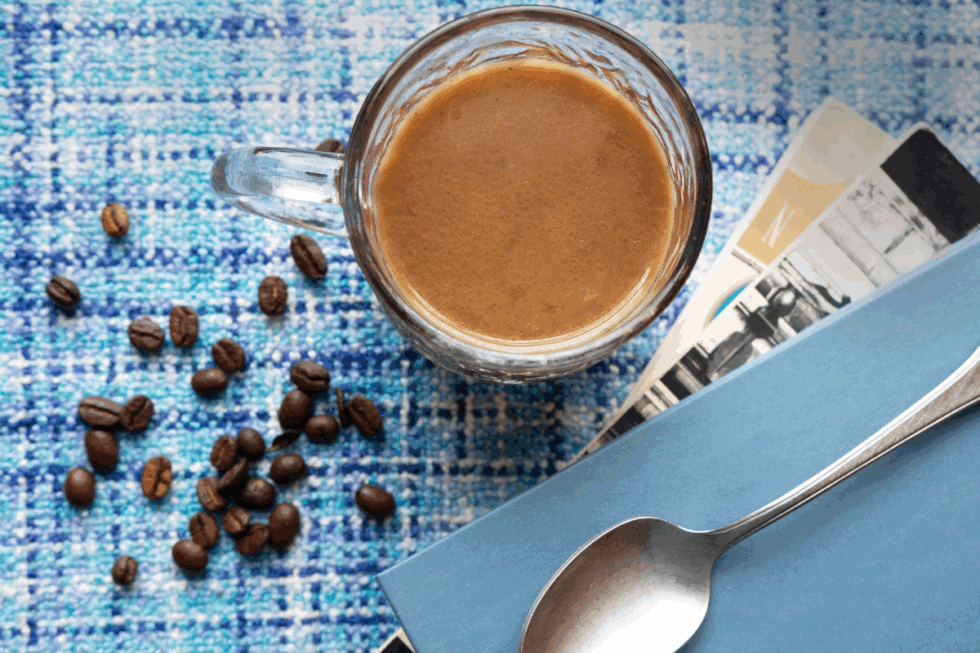
Low Histamine Vanilla Mint Coffee: What to Know About Coffee and Histamine
You’ll want to warm up with this low histamine vanilla mint coffee drink once you know more about coffee and histamine!
Did you know that coffee may be possible for you even with Histamine Intolerance?
But there are a few things you should know about choosing the right coffee.
We’ll share those secrets with you so keep reading to find out more!
How do you enjoy your cup of coffee?
Do you prefer black coffee? Or do you like a little sweetener like stevia or monk fruit?
Or are delicious coffee shop lattes your favorite?
If it’s the flavored coffee treats you love, you’ll want to try our vanilla mint coffee drink recipe.
We’ve taken our favorite low histamine coffee and added some mint and coconut cream to make this delicious drink.
It’s perfect on a cold day or anytime you want to mix things up in your routine.
Keep reading to get the recipe and learn more about:
- Why coffee may be causing reactions for you
- Choosing a better coffee for Histamine Intolerance and Mast Cell Activation Syndrome (MCAS)
- Tips for tailoring the recipe to your taste
This recipe is:
- Low histamine
- Low oxalate
- Low lectin
- Low FODMAP
- Dairy Free
- Gluten Free
- Vegetarian
Coffee and Histamine Intolerance and Mast Cell Activation Syndrome
Before you change your diet on your own, please make sure you’re working with a healthcare practitioner who can help you with this. Never limit foods unnecessarily, and always have a licensed medical provider who is supervising your case.
Is coffee high histamine? It’s not a simple answer.
Here’s more on why coffee consumption may be adding to your health issues when it comes to Histamine Intolerance and Mast Cell Activation Syndrome.
Coffee may cause histamine reactions or trigger mast cells due to:
- Caffeine
- How the coffee is processed
- Toxins
- Mold
- Additives and preservatives
Caffeine
Caffeine is a nervous system stimulant.
In simple terms, think about the “coffee high” you get after drinking a cup of coffee.
Do you feel less tired and more energized after drinking a cup of caffeinated coffee?
This happens because caffeine acts on the neurotransmitters in your brain that cause drowsiness.
It’s no wonder people turn to drinks like coffee and tea when they need a pick me up.
But caffeine can be a problem if you have Histamine Intolerance.
Studies have shown that caffeine can promote the release of histamine in your body.
Related Article: What Is Histamine Intolerance?
Further, some people with FODMAP Intolerance or Irritable Bowel Syndrome (IBS) report experiencing cramping and diarrhea after consuming coffee.
Caffeine can stimulate colonic motor activity. This refers to the muscular contractions of the colon that move waste through the large intestine.
Colonic motor activity can trigger mast cells and thus histamine release.
Now you’ve seen how caffeinated coffee and histamine can be related.
Next, let’s look at how processing coffee may make a difference in with Histamine Intolerance or MCAS symptoms.
Processing Coffee
When it comes to coffee, there are a few major triggers when it comes to processing.
One source is toxins like pesticides which can be sprayed on the plants during growing season.
A second concern is fermentation.
You might think of kombucha when it comes to fermented beverages.
But you probably don’t think of coffee.
However, most coffee has been fermented.
Fermentation typically occurs during the processing of the coffee cherry or the coffee bean.
Fermentation develops the flavor of the coffee. It can also help remove the fruit and other protective layers from the bean.
But fermented foods have higher histamine levels. This is due to an increased number of bacteria that release histamine. (Bacteria and yeasts, either introduced or naturally occurring, are present with fermentation.)
And the longer something ferments, the more histamine builds up.
Need help getting histamine levels lowered? Check out this related article on the histamine lowering enzyme, diamine oxidase (DAO): The Best Antihistamine for Histamine Intolerance and Mast Cell Activation Syndrome
Another big issue in coffee is mold.
Lesser quality coffee producers aren’t necessarily checking for and removing moldy beans.
In one third-party test of green coffee beans, mold was found in 46 brands!
Mold Toxicity is the #1 root cause of Mast Cell Activation Syndrome we see in the practice.
Next, read more about toxins and mold in coffee and how they might be affecting your symptoms.
Toxins, Mold, and Other Mast Cell Triggers Found in Coffee
A few toxins that can be found in coffee include:
- Pesticides – residue from treatments used to control pests like bugs and weeds
- Polycyclic Aromatic Hydrocarbons (PAHs) – from high heat used to roast beans
- Acrylamide – byproduct of roasting process
- Methylene chloride – used to decaffeinate coffee
- Mold and mold toxins
These types of toxins can affect the immune system. Your mast cells are part of your immune system!
Learn more about these toxins and how they affect your health in our article, Low Histamine Coffee for MCAS
Toxins can also arise if the coffee beans and coffee fruits aren’t processed with clean, contaminant-free water.
And surfaces of machines need to be cleaned often to avoid the buildup of microorganisms like bacteria and mold.
Other potential mast cell triggers that may be lurking in your coffee include additives and preservatives. Here’s more.
Additives and Preservatives
You might expect commercially produced coffee drinks with flavors like pumpkin spice or salty caramel to contain additives and preservatives.
Artificial food dyes and flavorings are top mast cell triggers potentially found in drinks like these.
But you might not expect to find additives and preservatives in your coffee beans.
However, look closely at the labels of some beans that have flavors like “toasty hazelnut”. You might find ingredients like “natural and artificial flavors.”
The term “natural” typically suggests something found in nature. Like a mint leaf.
To be called “natural flavor” the original source must be from a plant or animal.
But from there, “natural flavors” can be highly processed and contain many chemical additives.
The most common additives and preservatives that cause reactions include:
- Sulfites – help food maintain color and extend shelf life
- Sodium benzoate – helps prevent mold growth an extends shelf life
- Food coloring – used for visual appeal
Food toxins can trigger mast cells by binding to IgE antibodies on the mast cells. This causes them to release inflammatory mediators like histamine.
Finally, let’s look at one of the biggest concerns to be aware of with coffee – mold.
Mold
We mentioned earlier that Mold Toxicity is the #1 root cause of Mast Cell Activation Syndrome we see here in the practice.
Mold produces toxins called mycotoxins.
Two of the most common mycotoxins found in coffee are:
- Aflatoxin B-1
- Ochratoxin A
Why is mold so prevalent in coffee?
Coffee grows in warm, moist climates. Perfect conditions for mold to thrive.
Once harvested, yeast and bacteria may be used to process the coffee.
Yeast and bacteria are not types of molds. But they can contribute to mold growth by creating a favorable environment and food source.
Need help with Mold Toxicity?
Related Resource: MC360® PRECISION MOLD MASTER CLASS
With all these potential issues with coffee, are you surprised that we have a coffee recipe for you?
We do! But it starts with choosing the right coffee.
Choosing Low Histamine Coffee
You might be avoiding coffee while on the low histamine diet due to any of the reasons you just read about.
But there is coffee out there that’s been working for a lot of our clients and audience…even with Histamine Intolerance and Mast Cell Activation Syndrome.
One of the best, high-quality coffee brands we’ve found is Purity Coffee®.
Here’s what we love about Purity Coffee®:
- USDA organic coffee – no pesticides
- Toxin-free – including no mold toxins
- Uses a smokeless roasting process – reducing acrylamide levels and the development of PAHs, mast cell triggers
- Uses Swiss Water® Process to decaffeinate their beans – no use of methylene chloride
- Rich in antioxidants – protects cells from damage by free radicals
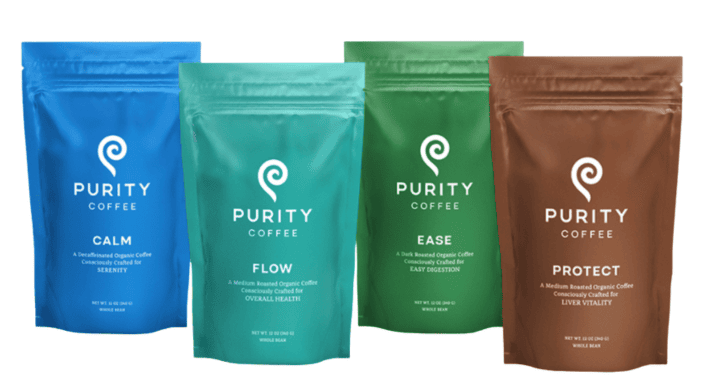
>>> Save 30% on all orders through December 1 with code MASTCELL360
Depending on where you are with your health, you might be able to handle some caffeine.
But we typically suggest starting with decaf if you have histamine issues.
Decaf Coffee
As you read earlier, caffeine can cause histamine release, adding to your histamine load.
Purity Calm offers a delicious, decaffeinated coffee option!
The taste is full, rich, and satisfying. It doesn’t taste like burnt, bottom of the pot coffee.
No decaf is truly caffeine free. But Purity’s decaf coffee is 99.9% decaf.
That’s really about as decaf as you can get.
Decaf is also a great option if you get effects from caffeine such as:
- Coffee jitters
- Trouble sleeping
- Diarrhea or other gut issues
- Increased anxiousness
- Dehydration
Want something in between fully caffeinated and 99.9% decaf?
Purity has an option called Balance which is ⅓ caffeine. Lots of options!
We hope you’ll enjoy trying coffee again.
Now, you may be wondering about the fermentation you read about earlier. Here’s more.
Fermentation and Purity Coffee
Why does Purity seem to work better for some people with Histamine Intolerance or MCAS even though it uses the fermentation process, too?
Here’s what we suspect.
Purity uses the washed or wet method of fermentation for our favorite blends including Ease, Flow, Balance, and Calm (the decaf option).
Wet fermentation is a newer process than traditional dry fermentation. It became popular to help with quality control.
There haven’t been many tests on this, but here’s what we suspect.
Wet fermentation takes less time than dry fermentation.
The longer something ferments, the more histamine builds up. So, less time fermenting may help keep histamine content lower.
Purity also washes their beans in fresh water after fermentation.
Fermentation doesn’t necessarily end when the beans have been washed.
But we suspect that a second wash may help the fermentation process slow down by reducing the bacteria and yeast and material they feed on.
Here’s what we do have tests on.
Toxin Free Coffee
Purity has conducted extensive third-party testing to ensure their coffee beans are free from pesticide residue, mold, mycotoxins, and other contaminants.
We suspect that some of these other toxins found in lesser quality coffees may be contributing to symptoms even more so than histamine.
This being said, again, we don’t have conclusive testing on why Purity ferments but is ok for so many of us with Histamine Intolerance and MCAS.
But we suspect it’s due to the overall cleaner product.
We know how little treats can make healing easier. Being able to have coffee can help some people feel less deprived and boost morale.
But it may not be for everyone. And it may not be time just yet.
If you are super sensitive, you may want to wait until Phase 2 of the low histamine diet to try adding coffee again.
And if you aren’t sure if you tolerate coffee, just start small with ¼ cup or even less if you tend toward super sensitivity.
But if you’re ready to try coffee again and ready to mix things up a little, you might really enjoy this vanilla mint coffee drink using Purity Coffee® as your base.
Here are some tips to tailor this recipe to your taste.
Low Histamine Vanilla Mint Coffee Tips
This vanilla mint coffee drink is much more natural and subtle in flavor than the artificially flavored drinks you’ll get from a big-name coffee franchise.
And it isn’t as sweet.
Here are our top tips for making the recipe and how you can tailor it to your liking.
Brewing the Coffee
You’ll start by using fresh mint leaves to make a “tea”. Basically, you’ll steep fresh mint leaves in boiling water.
We suggest about 10 minutes on low heat to help the mint infuse the water for a fuller taste.
Then you’ll use this “tea” to make your coffee.
For this recipe, the French Press is a great option. You don’t have to worry about straining the mint leaves.
Just pour the mint tea into the French Press containing your coffee grounds. The leaves and grounds will get pressed to the bottom under the plunger.
How Much Coffee Should You Use?
Typically, you’ll use about 1 Tablespoon of ground coffee per 8 ounces of water to make coffee.
If you want this vanilla coffee drink to be a little more mint forward, use a little less coffee.
About ½ to 1 Tablespoon less will make a weaker coffee without being too weak. This will bring the mint flavor more forward.
For example, in our recipe, we use 32 ounces of water and 4 Tablespoons of coffee grounds.
To make it more mint forward, try 32 ounces of water to 3 or 3 ½ Tablespoons coffee grounds.
If you have the time, you can also let the mint leaves simmer in the water for another 5 minutes or so.
If you want just a back end note of mint, use the suggested amount.
Either way, the mint is more of a nice, subtle complimentary flavor. Nothing strong or artificial.
Sweet Tooth?
This recipe was inspired by the flavored lattes you get at the cafe.
It isn’t a true latte, though, because we haven’t used espresso, or steamed or frothed milk.
But when you see those commercials and ads for the specialty drinks, it kind of makes you want something fun, too, right?
That’s why we thought we’d try making something festive!
Now, this coffee drink won’t be as sweet as what you’d expect from the local barista.
A lot of the flavored latte drinks these days are super sweet.
But we’ve added some sweetness and creaminess to this drink with vanilla whipped cream.
The whipped cream is just coconut cream, vanilla powder, and monk fruit powder whisked together.
Smart Monk monk fruit powder comes with a tiny measuring spoon which measures out 1/32 teaspoon. We used 1/32 teaspoon in our whipped cream.
If you want your coffee drink sweeter, experiment with adding more monk fruit powder.
Here’s what to know about monk fruit powder.
We highly suggest the Smart Monk brand. We’ve tried other brands, and this has the best taste in our opinion.
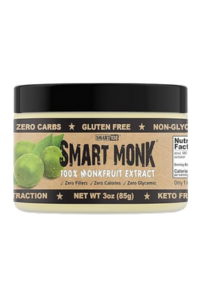
Even with this good quality monk fruit powder, you’ll want to add more in very small increments. A little goes a long way.
You could also use stevia if you prefer.
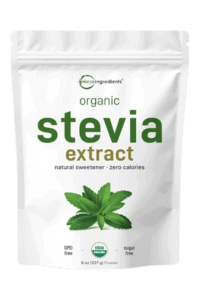
Remember, great tasting and clean water makes the best cup of coffee. We recommend using filtered water with the AquaTru Water Purification System.
Cheers!
Purity Coffee makes a thoughtful gift for any coffee lover — whether they’re sensitive or not.
It’s gentle on the system, packed with health-supportive antioxidants, and tastes great. We recommend bundling the ingredients for this delicious recipe and pairing them with a cozy mug you know they’ll love.
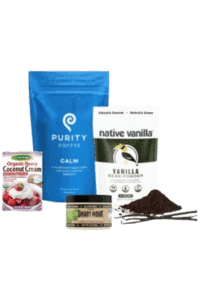
The Vanilla Mint Coffee Bundle
- Purity Ground Coffee
- Organic Coconut Cream
- Pure Monk Fruit Powder
- Raw Vanilla Powder
- Peppermint Leaves
Enjoy This Low Histamine Vanilla Mint Coffee With:
- Cranberry Crumble Bar Recipe – Low Histamine, Low Oxalate, Low Lectin, Low FODMAP
- Scones Recipe – Low Histamine, Medium Oxalate, Low Lectin
- Blueberry Cassava Flour Muffins – Low Histamine, Medium Oxalate, Low Lectin, with Low Salicylate option
- Fresh Fruit Cobbler – Low Histamine, Medium Oxalate, Low Lectin
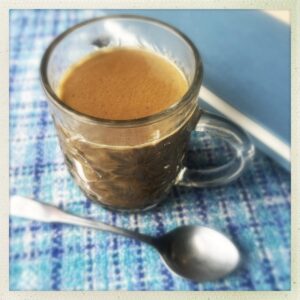
Low Histamine Vanilla Mint Coffee Drink
Equipment
- French Press
- Small Pot with Lid
- Spoon
Ingredients
- 4 cups Filtered Water
- 20 Peppermint Leaves
- 4 Tablespoons Ground Purity Coffee Beans
- ½ cup Let’s Do Organic Coconut Cream
- 1/32 teaspoon Smart Monk 100% Pure Monk Fruit Powder
- ½ teaspoon Raw Vanilla Powder
Instructions
- Grind your coffee beans and transfer the ground coffee to your French press. Set aside.
- Add water and mint leaves to a pot over high heat and bring to a boil.
- When the water comes to a boil, reduce heat to low and let simmer for 10 minutes.
- While the mint water is simmering, make the cream for the coffee. Add coconut cream, vanilla powder, and monk fruit powder to a bowl. Combine with a whisk. Set aside.
- After you’ve simmered the mint water for 10 minutes, transfer this mint water to your French Press. Cover with lid, but do not press the plunger down.
- Let coffee steep for about 5 minutes. Then press down the plunger.
- Pour the coffee into your mug and add 2 Tablespoons of the whipped cream mixture. Stir to combine. Enjoy!
Nutrition
Coffee and Histamine Intolerance can co-exist! With a good quality coffee, like Purity, the chances of success are much better. Have you had success with Purity? Let us know!
More Tasty Low Histamine Beverages
- “Pumpkin Spice” Drink Recipe – Low Oxalate, Low Lectin, Low FODMAP
- Frozen Vanilla Coffee Cooler – Low Oxalate, Low Lectin, Low FODMAP
- Tulsi Rose Tea Recipe – Low Oxalate, Low Lectin, Low FODMAP
- Elderflower Sparkling Wine Cocktail (plus Mocktail option) Recipe – Low Oxalate, Low Lectin, Low FODMAP
- White Chocolate Low Histamine Coffee – Low Oxalate, Low Lectin
The website provides approximate nutrition information. Users should calculate the nutritional information with the actual ingredients and quantities they use in their recipes for the most accurate representation.
Some links in this website are affiliate links, which means Mast Cell 360 may make a very small commission if you purchase through the link. It never costs you any more to purchase through the links, and we try to find the best deals we can. We only recommend products that we love and use personally or use in the Mast Cell 360 practice. Any commissions help support the newsletter, website, and ongoing research so Mast Cell 360 can continue to offer you free tips, recipes, and info. Thank you for your support!
References
Awwad, S., et al. (2021). Quantification of caffeine and chlorogenic acid in green and roasted coffee samples using HPLC-dad and evaluation of the effect of degree of roasting on their levels. Molecules, 26(24), 7502. https://doi.org/10.3390/molecules26247502
Barbara, G., et al. (2004). Activated mast cells in proximity to colonic nerves correlate with abdominal pain in irritable bowel syndrome. Gastroenterology, 126(3), 693–702. https://doi.org/10.1053/j.gastro.2003.11.055
De Winter, B. Y., Van Den Wijngaard, R. M., & De Jonge, W. J. (2011). Intestinal mast cells in gut inflammation and motility disturbances. Biochimica Et Biophysica Acta (BBA) – Molecular Basis of Disease, 1822(1), 66–73. https://doi.org/10.1016/j.bbadis.2011.03.016
Exon J. H. (2006). A review of the toxicology of acrylamide. Journal of Toxicology and Environmental Health. Part B, Critical Reviews, 9(5), 397–412. https://doi.org/10.1080/10937400600681430
FoodData Central. (n.d.).https://fdc.nal.usda.gov/fdc-app.html#/food-details/171890/nutrients
Freedman, N. D., et al. (2012). Association of coffee drinking with total and cause-specific mortality. New England Journal of Medicine, 366(20), 1891–1904. https://doi.org/10.1056/nejmoa1112010
Frossi, B., et al. (2003). Oxidative stress stimulates IL‐4 and IL‐6 production in mast cells by an APE/Ref‐1‐dependent pathway. European Journal of Immunology, 33(8), 2168–2177. https://doi.org/10.1002/eji.200323995
Hwang, S. J., et al. (2013). Anti-inflammatory effects of chlorogenic acid in lipopolysaccharide-stimulated raw 264.7 cells. Inflammation Research, 63(1), 81–90. https://doi.org/10.1007/s00011-013-0674-4
Iriondo-DeHond, A., et al. (2020). Effects of coffee and its components on the gastrointestinal tract and the brain-gut axis. Nutrients, 13(1), 88. https://doi.org/10.3390/nu13010088
John, J., Kodama, T., & Siegel, J. M. (2014). Caffeine promotes glutamate and histamine release in the posterior hypothalamus. American Journal of Physiology, Regulatory, Integrative and Comparative Physiology, 307(6), R704–R710. https://doi.org/10.1152/ajpregu.00114.2014
Martins, M. L., et al. (2003). Incidence of microflora and of ochratoxin a in green coffee beans (Coffea Arabica). Food Additives; Contaminants, 20(12), 1127–1131. https://doi.org/10.1080/02652030310001620405
Micco, C., et al. (1989). A study of the contamination by ochratoxin a of green and roasted coffee beans. Food Additives and Contaminants, 6(3), 333–339. https://doi.org/10.1080/02652038909373788
Nuhu, A. A. (2014). Bioactive micronutrients in coffee: Recent analytical approaches for characterization and quantification. ISRN Nutrition, 2014, 1–13. https://doi.org/10.1155/2014/384230
Ramalakshmi, K., et al. (2009). Bioactivities of low-grade green coffee and spent coffee in different in vitro model systems. Food Chemistry, 115(1), 79–85. https://doi.org/10.1016/j.foodchem.2008.11.063
Soliman, K. M. (2002). Incidence, level, and behavior of aflatoxins during coffee bean roasting and decaffeination. Journal of Agricultural and Food Chemistry, 50(25), 7477–7481. https://doi.org/10.1021/jf011338v
Studer-Rohr, I., et al. (1995). The occurrence of ochratoxin A in coffee. Food and Chemical Toxicology, 33(5), 341–355. https://doi.org/10.1016/0278-6915(94)00150-m
Swiney, C. (2024, March 26). Non-FODMAP dietary triggers of IBS Symptoms. https://www.monashfodmap.com/blog/non-fodmap-dietary-triggers-of-ibs-symptoms/
TMS – The Mast Cell Disease Society, Inc. (2022, September 21). Nutrition – TMS – The Mast Cell Disease Society, Inc. TMS – the Mast Cell Disease Society, Inc. https://tmsforacure.org/nutrition/
Yu, Y., Jin, H., & Lu, Q. (2022). Effect of polycyclic aromatic hydrocarbons on immunity. Journal of Translational Autoimmunity, 5, 100177. https://doi.org/10.1016/j.jtauto.2022.100177
Worm M. (2011). Q&A: Food additive intolerance. BMC medicine, 9, 115. https://doi.org/10.1186/1741-7015-9-115
Zhao, W., et al. (2013). The interaction between oxidative stress and mast cell activation plays a role in acute lung injuries induced by intestinal ischemia–reperfusion. Journal of Surgical Research, 187(2), 542–552. https://doi.org/10.1016/j.jss.2013.10.033

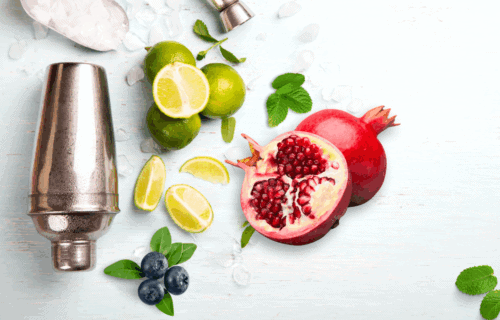
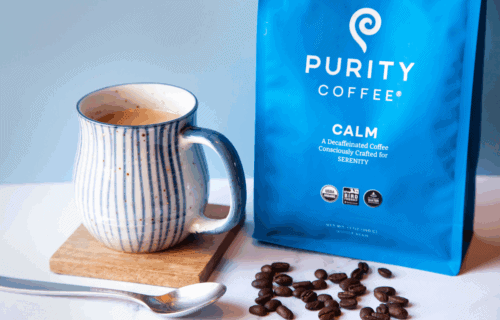
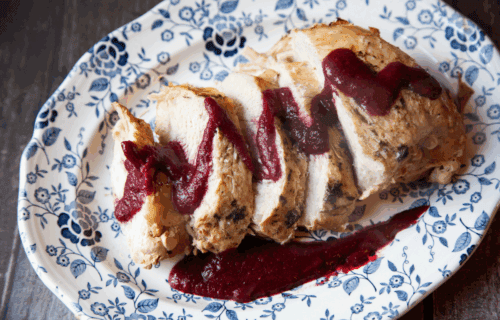
Add A Comment